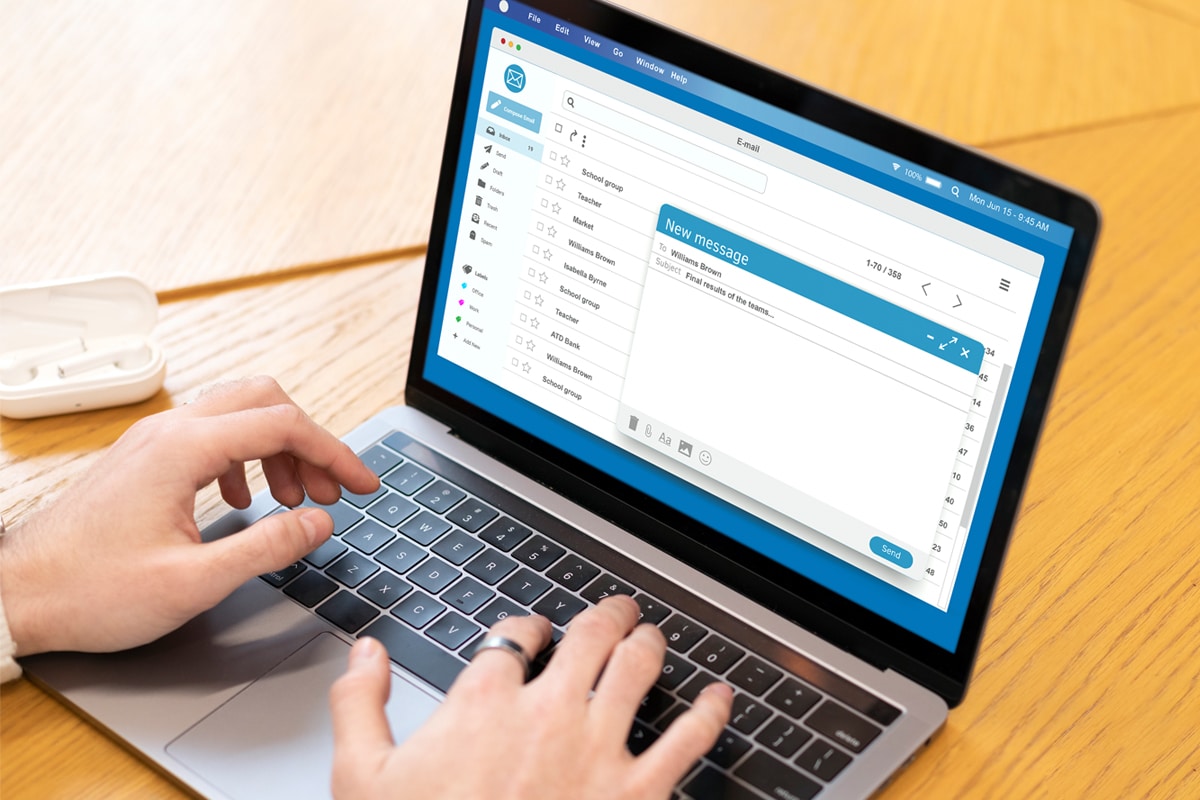
In the modern world of demand generation, leaders are constantly looking for better ways to sell.
Video. Social selling. Automation. It’s no secret that those who move with the pace of industry innovation reap the benefits of better efficiencies — and heightened win rates.
Yet, in the fast-paced, ever-changing context of inside selling, email offers some certainty. Almost every single B2B prospect will rely on email in some way. That’s not likely to change soon, especially as hybrid and remote working increases across the globe. In fact, around the world, THREE HUNDRED BILLION emails were sent each day last year. According to Statista, this figure jumps by about 15 billion annually.
Right now (and likely long into the future), email is crucial to inside sales strategy — a surefire tool for sellers looking to get their name in front of decision makers. It’s simple, often unobtrusive, and still leaves enough room for creativity and engagement… if done right.
In this article, we’ll take a closer look at five learnings you can use to craft your next exceptional sales email outreach campaign.
1. Keep it concise
No matter how well-crafted and researched your 700-word sales email is, your prospect won’t read it thoroughly — if at all. A decision maker’s inbox moves incredibly quickly. Most of your prospects, particularly in FT100 businesses and above, will skim-read. Even if the email is from a trusted sender.
Successful sales emails always prove the value of the product early and concisely. Remember: You’re not sending a marketing email; it’s a sales email. That distinction needs to be made. At Harte Hanks, we’ve found cold emails between 125 and 250 words to be the most effective.
This isn’t specifically a B2B sales industry insight, either. When was the last time you, as a consumer, read the entirety of a B2C email? It just doesn’t happen. This is expected human behavior. Plus, when you consider that 81% of emails are now read on a mobile device, the value of being concise becomes even clearer. Your prospects will thank you when you prove the value faster.
Key points:
- Use bullets to break down your point
- Stick to valuable and relevant benefits
- Don’t explain everything at length
- Leave the technical details out
2. Personalize, but be efficient
Everyone understands the importance of making it personal. Personalized emails will always perform better, no matter the industry or prospect. As humans, we crave interactions that feel authentic and real. When the recipient feels there’s a human on the other end, they’re instinctively more likely to open your email and engage.
This should not be ground-breaking rocket science to any seller. The challenge is doing it the right way. Too often, sellers get personalization wrong by either not doing enough in-depth research and being ineffective, or doing too much personalization and being inefficient. There’s a healthy balance. You can’t justify spending 20 minutes on one email for one person, just as you wouldn’t spend two minutes on an email sent to 100 people.
With the right ideal customer profile (ICP), lead generation and messaging strategy, you should be able to personalize en masse, as your prospects will naturally share some common traits. Think: pain points, sector, industry for example. As a rule, we advise making sure 80% of your email fits the general ICP, with the remaining 20% being personalized to the recipient — typically the introduction or call to action (CTA).
3. Treat emails as a component, not a stand-alone strategy
There’s more to inside selling than just writing emails. Approach email outreach as a component of your strategy, not the be-all and end-all. There are other factors in play that will contribute to closed-won.
Consider your influence on the full sales cycle. There’s no use writing an exceptional sales email while having a weak LinkedIn profile. If your prospect is interested in your offering or company, they have the right to do their own research. Be sure to update your other channels to fully align with your strategy and messaging.
Think about the positioning of your email in your touch pattern. Is it coming before a cold call? Why? Is it two days after a LinkedIn outreach? Why? Base these decisions on data, not gut instinct, for the best return. The pattern for your emails should either leverage or provide direction for the rest of your outreach.
4. Track everything
No matter what you do, no matter how much time you spend designing your strategy, even if you’re the greatest copywriter in the world: There’s no guarantee that your email will work.
Every salesperson using cold email outreach needs to track engagement through sales enablement software. There’s a huge range of tools available to gauge email impact — but you need to track it right. Looking at open rates isn’t a foolproof way to determine success. Any good subject line will result in a high open rate. While that may make you look great to your manager, your metrics should reflect the way prospects interact, and their level of engagement with your content. That way you can understand where to increase incentive and empowerment.
There are behavioral indicators you need to look for in your metrics, beyond just surface-level opens and clicks. Ask yourself: “What does this level of engagement mean for my prospect’s behavior?” It may be that they engaged with one email because they found the most value in the part of your offering you were pushing, or the approach suited their preferences and pain points. Email engagement data isn’t just quantitative. You can take qualitative insights from every email sent. It just takes some analytical thinking.
5. Don't be afraid to experiment
There’s a huge amount of research and development work that goes into the modern sales email. That won’t always guarantee success. Email is hugely influenced by human behavior, which tends to throw some curveballs.
Don’t discount your email strategy because it hasn’t worked. It just didn’t work for that prospect. If you’re seeing limited success, it may be a sign to reconsider; but you should be fine-tuning your content at every turn anyway.
With broad, logical metric tracking, there are lessons to be learned with every email sent. Bring the intelligence, your knowledge and your research together to strengthen your initial email, based on your discoveries from the first attempt.
A strong email campaign is a continuous process. It’s constant improvement. Marketing professionals conduct this “experimentation x analysis” process all the time, editing content to gain the best results possible. The same applies for sales. Whether it’s your talk track, assets or webinars, you need to maximize the areas of success and improve areas of weakness for the best possible return.
Final thoughts
Open. Respond. Buy. That’s often the end goal for any good inside sales email cadence, though there’s a lot more to it than a tested subject line and fancy email signature.
If you want to create a strong outbound email strategy for your team, put yourself in your sellers’ and sales prospects’ shoes. Understand how you can use historical data to drive performance forward. Look for moments to return to the drawing board. Conduct thorough testing before a team-wide rollout. That’s the only way to generate a consistent return on effort and reduce attrition from your sales reps.

As a Forbes Under 30 entrepreneur/consultant, Sercan is a highly experienced PlayOps Strategist. He helps Fortune 500 companies enhance their ToFu/MoFu pipeline strategies, sales enablement, business development optimization, and GTM plays.



